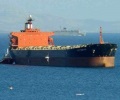
The Capesize market entered the fourth quarter on a bullish note with the key Brazil to China freight rate at a year-to-date high as iron ore demand from China continues to boom.
S&P Global Platts assessed the Tubarao-Qingdao rate for 170,000-mt (plus/minus 10%) iron ore cargoes, at $23/wmt on Oct. 2, up $1.35/wmt from Oct. 1.
Despite ongoing holidays in China and most of North Asia, the Capesize market extended its firm run on many of the active iron ore routes.
The Platts Cape T4 index basis 0.5% sulfur marine fuel breached the psychologically important $30,000/day mark to touch $30,725/d on Oct. 2. The index hit its highest level of $31,901/d on July 6, Platts data showed.
China’s iron ore imports from Brazil were up 15% month on month at 23.5 million mt in August, latest data from the General Administration of Customs showed. This is the highest volume of Brazilian iron ore imported into China so far in 2020, the data showed.
China typically sees iron ore imports from Brazil peak in the second half of the year.
The rise in imports helped increase the ton-mile demand on Capesize ships.
Ton-mile demand is calculated by multiplying the volume moved in metric tons by distance traveled in miles. Covering a longer distance implies diminished availability of ships even if the total size of the fleet remains the same or conversely, it offsets the increase in supply of tonnage.
Supply crunch on Atlantic drives up rates
Spot freight rates were supported by tight tonnage supply in the Atlantic basin, while demand remained robust in the region, market participants said.
“Vale is now looking at post-Panamax and Baby Cape [ships] instead of Capesize [ships]. Shippers are also looking for front hauls (Brazil-China voyages],” a ship-chartering source said.
Bids and offers on the Brazil-China route were improving significantly for October and early-November loading windows, participants said.
“The freight rates for trips out of Brazil continued to swell, especially for October dates, where the ballasters’ list appears to be tight for vessels [that can arrive for] October loading,” a ship-operating source said.
“Strong momentum for the Oct. 20-30 [loading window] could be carried over to the Nov. 1-10 laycans very easily,” another ship-operating source said.
Rosy short-term outlook
“So far, the market is still promising, and the fourth-quarter performance for Capesize mainly dependent on the shipping demand from Brazil,” a chartering source with a Chinese steel mill said.
Meanwhile, Brazilian mining major Vale has not announced any changes to its iron ore production guidance for 2020, which is in the 310 million-330 million mt range, despite the halt to operations at its Viga concentration plant on Sept. 24, which impacts 11,000 mt/day of iron ore fines output.
According to Platts trade-flow software cFlow, Vale’s exports from Brazilian ports totaled around 79 million mt for the third quarter and 193 million mt over Q1-Q3.
Vale would need to export at least 107 million mt in Q4 to meet its 2020 target. As such, market participants expect the current Brazil market to be busier in the last quarter than it was in Q3.
“As expected, Vale should have more cargoes to move in the last quarter and obviously [push the] pace of [activity]. The shipowners are positive,” a Hong Kong-based shipbroker said, adding that the number of ballasters into the Atlantic basin had increased as well.
https://www.hellenicshippingnews.com/key-brazil-china-capesize-freight-hits-2020-high-on-tight-tonnage-supply/





